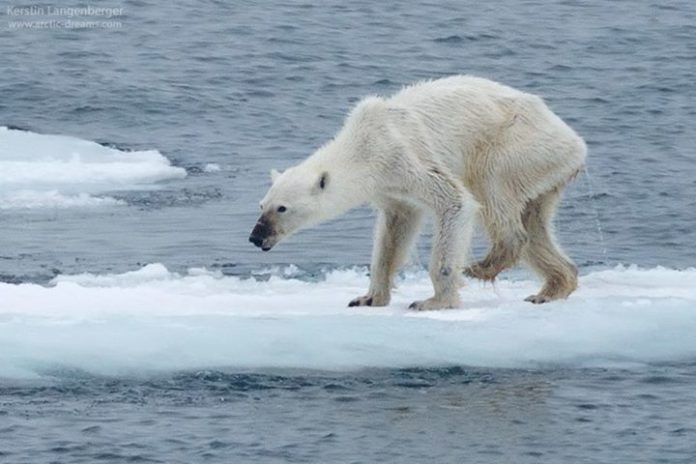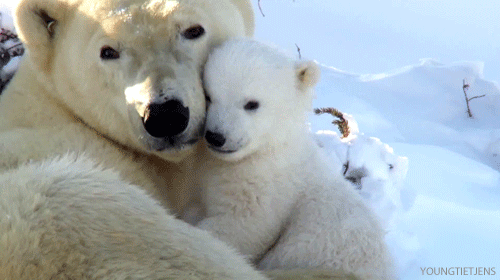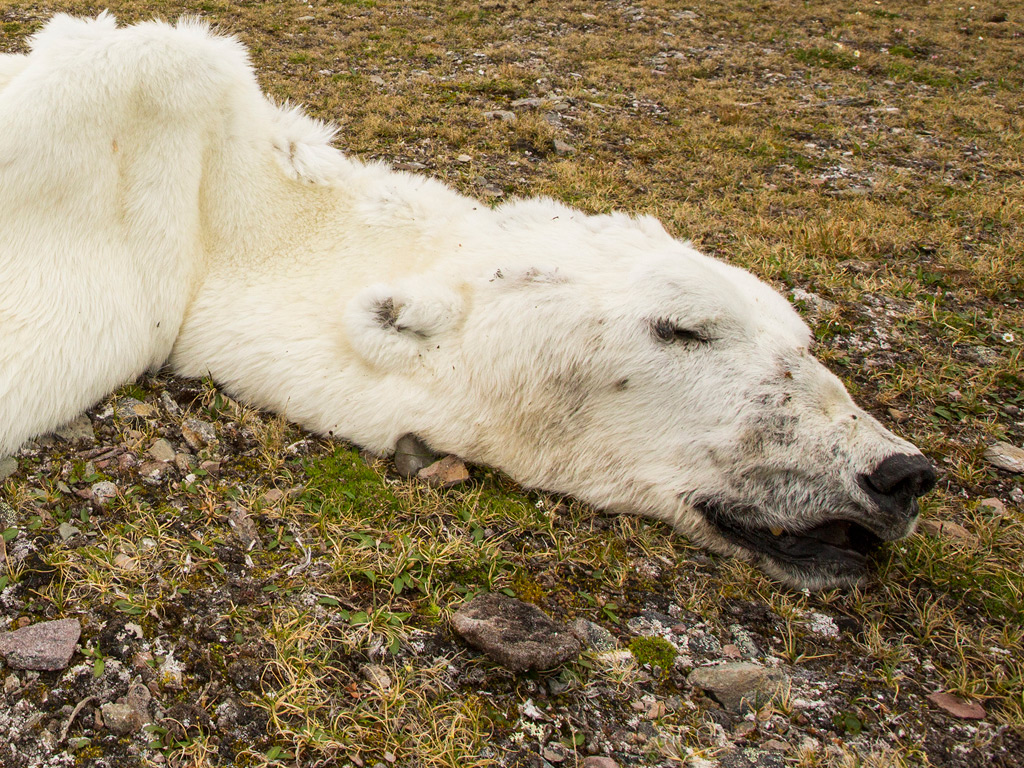
[responsivevoice voice=”UK English Female” buttontext=”Play”]
When you think of polar bears, you think of them as: polar bears – furry, fluffy, fat, attractive, appealing, powerful predators, strong swimmers roaming the Arctic ice sheets. But this shocking image of a emaciated polar bear clicked by Wildlife photographer Kerstin Langenberger on the Norwegian archipelago of Svalbard will ruin your imagination. The truth is that these beautiful playful bears, which prey on seals, are dying of starvation. And it is not a good sign.
For tourists and wildlife photographers, the main reason to come to Svalbard is to see polar bears. And yes, usually we…
Posted by Kerstin Langenberger Photography on Thursday, August 20, 2015
In her blog, Langenberger painted a grim picture of Svalbard – one of the most easily accessible polar bear populations of the world.
“I see the summers being so pleasant (and warm) as never before. I see the glaciers calving, retreating dozens to hundreds of metres every year. I see the pack ice disappearing in record speed. Yes, I have seen bears in good shape – but I have also seen dead and starving polar bears. Bears walking on the shores, looking for food, bears trying to hunt reindeer, eating birds’ eggs, moss and seaweed… Only few times I have seen beautifully fat mothers with beautifully fat young. Many times I have seen horribly thin bears, and those were exclusively females – like this one here. A mere skeleton, hurt on her front leg, possibly by a desperate attempt to hunt a walrus while she was stuck on land…Only once I have seen a bear getting a big fat five [on the body index scale], but several times I have seen dead bears and bears like this one: a mere one on the scale, doomed to death.”
Iain Stirling, from the University of Alberta, said the bear could be sick or old – and is not necessarily dying from the effects of climate change. “You have to be a little bit careful about drawing conclusions immediately. [The bear] may be starving, but it may just be old. A difficulty hunting could be involved. I don’t think you can tie that one to starvation because of lack of sea ice,” he told Mashable.
While it is difficult to ascribe a single death or act to climate change it couldn’t be clearer that drastic and long-term changes in their Arctic habitat threaten the survival of the polar bear. Attributing a single incident to climate change can be controversial, but it is certainly the latest bit of evidence of the impact of climate change. Climate change, and the loss of sea ice habitat, is the greatest threat to polar bears followed by oil exploration, toxic pollution and overhunting.
In 2014, National Geographic photographer Paul Nicklen too captured a photo of an emaciated, deceased polar bear while traveling around Svalbard. In his post accompanying the photo on Instagram, Nicklen wrote that this was just one of several dead bears he observed in that location in 2014.
Climate change has reduced ice in the Arctic to record lows, forcing animals to range further in an ultimately unsuccessful search for food. In 2013, The Guardian reported the death of a starved polar bear in Svalbard as the bear “reduced to little more than skin and bone” probably followed the fjords inland as it trekked north, meaning it may have walked double or treble that distance for food but appears to have been unsuccessful.
In 2007, the US Geological Survey estimated that the global polar bear population will shrink to a third of its current size by 2050, due to loss of habitat and less access to prey. Analysis of satellite data by the National Snow and Ice Data Center in 2013 showed that Arctic sea ice extent shrunk to 5.10 million square kilometers.
Polar bears residing in the US Arctic are listed as a threatened species under the Endangered Species Act, and the IUCN Red List designates polar bears throughout the Arctic as “vulnerable” because of sea ice loss trends and predictions of a nearly ice-free Arctic Ocean by the middle of this century.
This Article (Emaciated Polar Bear Shows What’s Wrong With OUR World) is free and open source. You have permission to republish this article under a Creative Commons license with attribution to the author and AnonHQ.com.
[/responsivevoice]







The funny thing is that there are climate warm deniers, and some of them are scientist and not just ignorants following an idea. Some of those scientist even have good data to back up their claims, but sometimes what they say and what we can see doesn’t match with the reality!.
death is all the people of earth deserve, you disgust me humanity, may you suffer the same cruel inhumane and sadistic punishments that you force upon the innocent creatures of this world.
you’re a part of the problem too
So I guess you are bigfoot or something other than human?